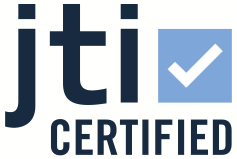
Major new initiative aims to bring AI to cancer treatment in Switzerland

Despite all the buzz around artificial intelligence (AI) in medicine, a cancer patient entering a Swiss hospital today is unlikely to encounter it. A partnership among universities, hospitals, and private companies now aims to change that.
The project, called the National AI Initiative for Precision Oncology (NAIPO), will bring AI into cancer care by developing tools to help doctors diagnose and treat the disease. To do this, it will build a database of patient records and diagnostic notes, then use large language models (LLMs) to analyse the information. It will also bring AI to radiology, pathology, and other clinical fields.
The five-year project is funded with CHF8.25 million ($10.4 million) by Innosuisse, the country’s technology agency, and another CHF10 million from partner institutions. That makes it among the best-funded cancer research projects currently underway in Switzerland.
“At the end of the programme we should be able to help precision oncology patients benefit from all these AI developments so that they get treated in a better way,” says Olivier Michielin, head of the department of oncology at Geneva University Hospitals (HUG) and co-coordinator of the project.
“The final goal, as always in oncology, is to increase the survival rate, and improve all the metrics of treatment benefits,” he adds.
How will the initiative work?
The first step is to create a shared central repository of data, including medical records and treatment notes from consenting patients. From there, LLMs will be developed to extract, collect and share information, coordinating treatment. Another strand of NAIPO focuses on building AI tools for clinical practice, particularly in radiology and pathology, fields that already deal with complex datasets from genetic data or microscope images of tissues. In parallel, researchers will explore using AI to analyse tumour samples with a detail and depth that current tools cannot match.
The information that is gathered will go back to molecular tumour boards. These are medical bodies that bring together specialists to discuss cases and share opinions on diagnosis and therapies. There are local boards within individual hospitals, and a national one, where experts review the most complex among the more than 50,000 yearly cancer cases in Switzerland.
Finally, the project will engage patients through a dedicated mobile application to ensure they remain actively informed and engaged throughout their care.
NAIPO builds on the Swiss Precision Oncology initiative of the Swiss Personalized Health Network, a federal programme launched in 2018 and expanded in 2022 to complement a national repository of data for clinical research with state-of-the-art data collection to guide molecular tumour boards. The Swiss Precision Oncology project included many of the partners now involved in NAIPO.
AI tumour board in Zurich
NAIPO is not the first attempt to introduce AI to clinics. In May, University Hospital Zurich announced it was establishing an AI Tumour Board that will begin work in November.
The push to use AI in oncology is driven by what’s called “next-generation sequencing,” a technology developed over the last few decades that analyses the DNA in cancer cells. The process produced detailed information and created a need for complicated machine analysis. All Swiss university hospitals introduced next-generation sequencing about 10 years ago, according to Andreas Wicki, vice-president of the department of oncology and hematology at University Hospital Zurich. “This was the first time we got more data than we had ever [gotten] before,” he says.
Read more about the opportunities and risks of AI in healthcare treatment:

More
AI-powered neurotechnologies raise hopes and fears for health and privacy in Geneva
Many types of cancer cells exhibit DNA mutations, and identifying which mutation has occurred can be crucial for classifying the cancer and following the appropriate treatment guidelines. Both the AI tumour board and NAIPO intend to use AI to find patterns that may otherwise be overlooked and then provide that information to doctors.
“If you have a patient within a relatively standard situation, then you can use this to decide between equivalent therapies,” Wicki says. AI systems could also help recommend moving patients to trials for treatment. AI can also compare patients with similar characteristics within the network to coordinate and recommend treatment plans.
AI in digital pathology
There are high expectations for AI in the field of digital pathology, which works similarly to next-generation sequencing. Both start from a biopsy, but they focus on different things. Next-generation sequencing looks at the DNA to find genetic changes inside the cancer cells, while digital pathology looks at the tissue itself: it turns microscope slides into digital images, highlighting how the cells are arranged, how they look, and how they react to special stains – dyes or chemicals that make certain parts of the cells more visible under the microscope. Together, the two approaches give a fuller picture of the tumour, both inside (genes) and outside (tissue structure).
In Geneva, Michielin’s group is developing AI to predict the efficacy of specific therapies. If, for example, the algorithm indicates that a patient has a very low chance of benefiting from immunotherapy, oncologists might deprioritise this approach and pursue a different strategy. “It’s one additional component that you take into account in a multi-dimensional decision system on how to treat the patient,” Michielin says.
The algorithm has been trained with data from about 100 patients and is currently under validation with around 500 cases. The validation process is retrospective, meaning researchers are analysing samples from patients who have already been treated, then comparing the AI’s suggestions with the real-world outcomes to test whether the system can make accurate and reliable predictions.
The pharmaceutical company Roche, one of the main private partners in NAIPO and a collaborator of University Hospital Zurich, has developed a portfolio of AI-driven tools to assist pathologists in cancer diagnosis. For example, a team in Brazil recently claimed to have reduced breast cancer diagnosis time from one hour to 30 seconds using Roche AI instruments. A study from Spain also found that AI diagnosis could reduce the amount of time between when a biopsy sample arrives at the lab and when the final diagnosis is delivered to doctor and patient. With traditional methods, this took about 10.5 days on average, but with digital pathology it dropped to under seven days. The workload for pathologists decreased by nearly a third; in peak months it was reduced by more than half.
International attention on AI in cancer care
AI in oncology is drawing heavy attention internationally. The European Society of Medical Oncology (ESMO), a professional association with more than 30,000 members representing most European oncologists, is organising a conference in Berlin in November dedicated to the subject.
“When we had the first conversation about the conference, we imagined that maybe 150 people would have attended. But when we started organising, we realised that this is a very hot topic and now the venue will welcome over a thousand participants,” says medical oncologist Rudolf Fehrmann of the University Medical Center Groningen, who is one of the conference organisers.
NAIPO will not be on the agenda this year due to timing issues but “will surely have results to be presented in the next editions,” Michielin says.
More
Similarly to Switzerland, other European countries are also investing resources to bridge oncology and artificial intelligence. In France, a consortium led by the private company Owkin and the cancer research hospital Gustave Roussy launched PortrAIt in 2023, a CHF30.6 million project funded by the European Union (EU) with the stated aim of making France a global leader in AI-driven cancer diagnostics. In its first two years, the consortium developed diagnostic AI tools that are now being deployed in laboratories across the country.
The EU-funded EUCAIM project (EUropean Federation for CAncer IMages) is building a pan-European digital infrastructure for cancer imaging, linking 76 partners to share and analyse de-identified medical images for AI-driven precision medicine. They collect, curate and share cancer imaging data to support the development of smarter diagnostics and predictive tools. Running from 2023 to 2027, it has a total budget of about CHF17.5 million.
In the UK, National Health System (NHS) England is launching the new cloud-based platform AIR-SP (AI research screening platform) to bring AI tools at scale across national screening programmes, including breast cancer screening. The CHF6.4 million initiative aims to speed up deployment, reduce costs and logistical barriers, and enable multiple NHS trusts to evaluate the same AI algorithms efficiently across the country.
Even if today AI’s presence in oncology remains limited, the situation is changing rapidly. Researchers hope that NAIPO will be another step towards better patient outcomes in Switzerland and beyond.
Edited by Gabe Bullard/ds

In compliance with the JTI standards
More: SWI swissinfo.ch certified by the Journalism Trust Initiative
















![The four-metre-long painting "Sonntag der Bergbauern" [Sunday of the Mountain Farmers, 1923-24/26] had to be removed by a crane from the German Chancellery in Berlin for the exhibition in Bern.](https://www.swissinfo.ch/content/wp-content/uploads/sites/13/2025/12/01_Pressebild_KirchnerxKirchner.jpg?ver=cb688ed5)















You can find an overview of ongoing debates with our journalists here . Please join us!
If you want to start a conversation about a topic raised in this article or want to report factual errors, email us at english@swissinfo.ch.